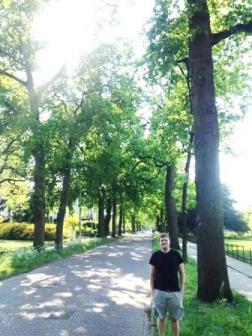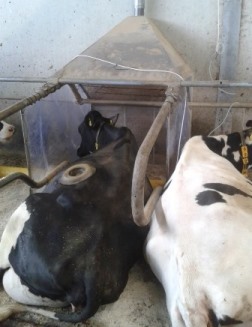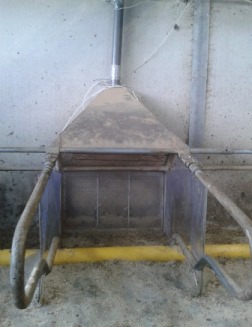 Large-scale methane measurements on individual ruminants for genetic evaluations
Large-scale methane measurements on individual ruminants for genetic evaluations
STSM - Genomic evaluation of multi-country methane emissions in Dairy cattle
Hi, I’m Gareth Difford, a PhD student at Aarhus University in Denmark working with genetics and methane emissions in Dairy Cattle and this is my blog about my METHAGENE COST Action STSM to Wageningen, The Netherlands. My goal was to work on a multi-country dataset of methane emission records from multiple instruments/techniques on lactating Holstein cattle in multiple production systems, what could be more Methagene than that?First week
My Methagene STSM was grated for two weeks (09 May 2016 – 20 May 2016). Starting fresh and early Monday morning I had a coffee meeting with Yvette and we formulated a game plan. I was expecting a steep learning curve adapting to the ways of the Wageningen research group, but being a DMU man myself and finding out I had to learn some ASReml was like crashing head on into Everest. Combining data from Ireland and Australia (SF6), UK (LMD), The Netherlands and Denmark (Sniffer with CO2 tracer) towards predicting breeding values for methane emission was always going to be a tall challenge, but a step that is sorely needed towards combatting climate change. What I was not fully prepared for was the complexities that can be found in datasets from multiple countries, nesting interaction terms, evaluating over parameterisation and really conceptualising the models we build, luckily I had a good teacher. After the first day of running my brain at full steam, it was time to recover and I did this by enjoying the Dutch beer culture and the chiming of bells at the Wageningen Market square.
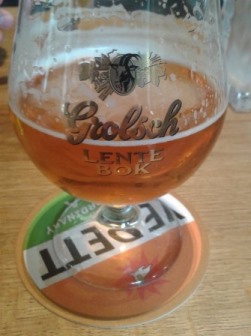

The day of the defence started off with an informative discussion with both chairs of Methagene cost action, Yvette de Haas and Jan Lassen (who was in Wageningen as an opponent for the Phd defence of another Methagene member Liansun Wu). Discussion focussed on reducing the inherent within country parameters while still achieving accurate predictions, not an easy task. In the defence we heard about Linasun’s ‘artificial reference cow’, an extremely useful tool in validating on-farm methane recording devices and definitely something to look out for in further Methagene work. Liansun also developed a methane hood for generating flux measures of methane and carbon dioxide in barns which he validated with the artificial reference cow. Hopefully further development will follow for commercial application. Congratulations to Liansun on his successful defence! You can stream the recording of the defence here: https://wurtv.wur.nl/p2gplayer/Player.aspx?id=cXpzf1
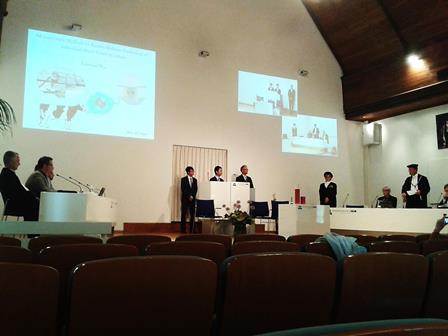
In the second week, work shifted to modelling with an H-1 matrix instead of exclusively using pedigree or genotype information. This in itself is likely to remain a key step in collaboration efforts using new or difficult to measure phenotypes on limited numbers of cows, as linking international pedigrees can be challenging and thus decrease the accuracy of expected genetic relationships in the A-1 matrix and since not all cows are genotyped the usefulness of accurate realized genetic relationships with lower numbers of observations can be called into question. With the help of Bernt Guldbransen and Donagh Berry we achieved a mixture of both matrices which resulted in the need to re-run all our models with the H-1 matrix. Luckily in the hours after work there were many beautiful sites to visit and quiet walkways in Wageningen to reflect on results and the next steps (beware of bicycles).
